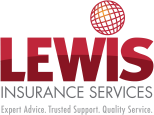With the events of 2020 affecting both the insurance industry and the business sector, knowing how insurers view your commercial property’s risk profile can be empowering. That’s because this knowledge has a direct impact on your company’s ability to access the type of insurance required at a price that is affordable.
If you can identify the areas of concern to insurers, you can put processes and systems in place to help your commercial property create a lower risk profile and achieve better terms for your insurance. So here are four areas that most insurers use as a lens through which they view commercial property risks.
Usage of the property
Untenanted property provides a certain risk to insurers such as vandalism and squatters. So, they will want to know how long it will take to find new tenants and what occupation they will have. Some industries such as tyre re-treading are seen as an extreme risk. The underwriter will also want to know about the physical security of the property while it is untenanted to prevent arson, graffiti, broken windows and other damage.
Once tenanted, insurers will need to know the nature of the tenant’s business, so that they can calculate the risk exposure of the property, loss of rental income and public liability insurance. Understandably, an insurer will rate the risk profile of a retail store differently to a restaurant or office. Other factors considered include opening hours, lighting of the premises and multiple tenants. This means that you need to understand the nature of the potential tenant’s businesses considering the impact they will have on your commercial property’s risk profile, excess and premium.
Construction, age and location of the building
The materials used when the building was constructed, and any subsequent renovations, can have a direct impact on your insurance cover. As well as the building’s age, location and what the roof is made of, will all be considered by the insurer. Questions an insurer will ask themselves include, how will the building and roof stand up to storms, fires, floods or hail? What about the safety of the building or car parking, is it in good repair? Is there any external cladding or asbestos in the building? Rectifying any of these problems can significantly reduce your commercial property’s risk profile and also the cost of the insurance.
Fire, storm, electrical and security threats
An insurer will consider the most likely threats to your business, including the occupation of the tenants, then decide what processes or systems are in place to counter these threats. So, for example, if storms are likely in the area, does the building have an exposure to flash flooding? When was the last time the main power board was checked for faults and hotspot to prevent electrical fires? What about CCTV or regular security patrols. Is the tenant likely to be ramraided? Is the building regularly checked for a build-up of rubbish or combustible materials, with increased risk of fire? Are there sprinkler systems and smoke detectors installed, when were they last inspected by a specialist?
Day to day risk factors
These generally refer to the daily activities that may affect the safety of the building. For example, does the tenant use inflammable or combustible materials? How are goods managed and pallets moved or stored? If it’s a factory, can the public access the interior and are there provisions for the safety of pedestrians and employees on site, if forklifts are used?
These are just some of the exposures and risks that an insurer will need to know about before quoting on your commercial property’s insurance. Identifying the hazards relating to your building and taking action to reduce risks will likely reduce your property’s risk profile and enable you to negotiate better terms with your insurer
For help identifying your commercial property’s hazards and risk factors, contact Lewis Insurance Services on 07 3217 9015 or send us an email by clicking here.
This article was published by our AFSL Licensee, Insurance Advisernet Australia P/L, www.insuranceadviser.net
Disclaimer:
This information and any accompanying material does not consider your personal circumstances as it is of a general nature only. You should not act on the information provided without first obtaining professional financial advice specific to your circumstances and considering the Product Disclosure Statement.

